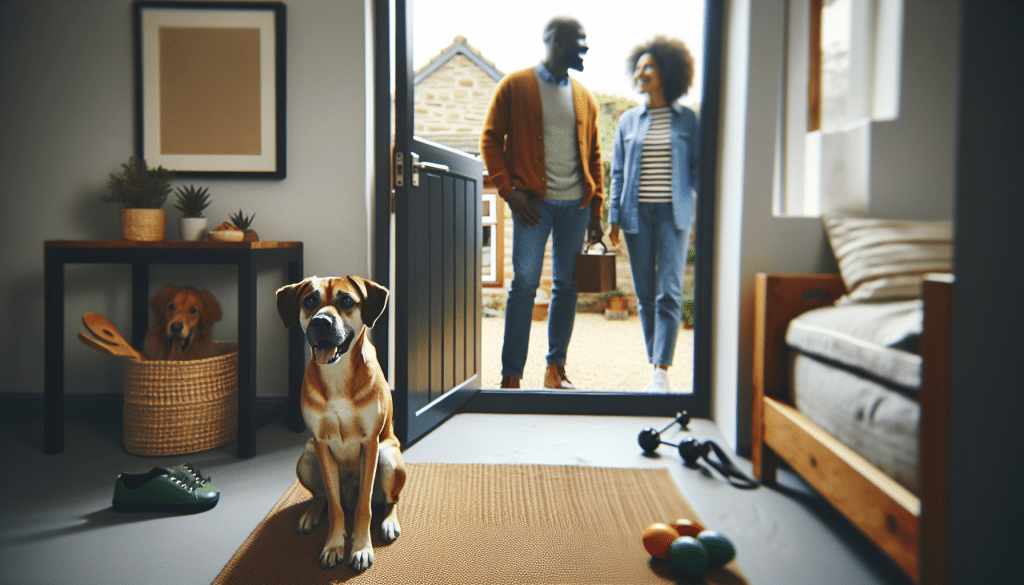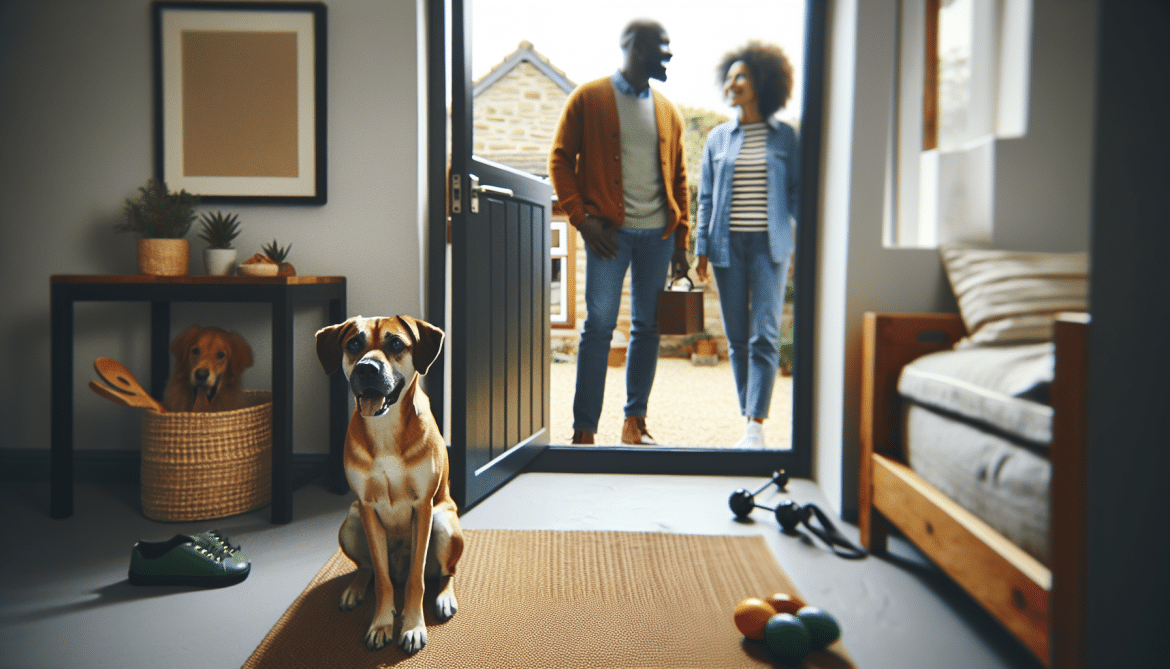So, you've made the exciting decision to bring a new furry friend into your family? That's fantastic! However, introductions can sometimes be a bit overwhelming, both for the humans and the pup. But don't worry, because we've got you covered with some helpful tips and tricks to ensure a smooth and successful integration of your new dog into your family. From gradual introductions to creating a safe and comfortable environment, these strategies will help establish a strong bond between your family and your new canine companion in no time. So, let's get started on this amazing journey of welcoming a new dog into your loving home!
Prepare Your Home
Secure the Environment
Before bringing a new dog into your home, it's important to ensure that your living environment is secure. This means checking your fences, gates, and any potential escape routes to make sure they are dog-proof. You should also secure any hazardous areas such as pools or busy roads, to prevent accidents. Taking these precautions will give you peace of mind and help keep your new furry friend safe.
Designate Dog-Friendly Spaces
Creating designated dog-friendly spaces in your home will help your new dog feel welcome and comfortable. Set up a cozy bed or crate in a quiet area where they can rest and relax. Designate specific areas where they can eat, drink, and play. This will not only provide a sense of structure for your dog, but also help them establish a routine and feel more at ease in their new environment.
Remove Hazards
Before bringing your new dog home, it's essential to remove any potential hazards from your living space. This includes storing away toxic plants, household chemicals, and medications. Keep electrical cords out of reach, secure loose objects that could be chewed on or swallowed, and ensure that your home is free of any small items that could pose a choking hazard. Taking these steps will help keep your new dog safe and prevent any accidents or injuries.
Stock Up on Supplies
To ensure a smooth transition for your new dog, it's important to have all the necessary supplies on hand. Stock up on food, treats, and water bowls. Purchase a comfortable bed, toys, and a leash for walks. Don't forget about grooming supplies such as brushes, shampoos, and nail clippers. Having these essential items ready will make your new dog feel right at home and save you from last-minute trips to the store.
Establish Boundaries
Set House Rules
Setting clear house rules from the beginning will help your new dog understand what is expected of them. Decide where your dog is allowed to go in the house and where they are not. For example, you may want to keep them out of certain rooms or off of certain furniture. Communicate these rules consistently and reinforce them with positive reinforcement when your dog follows them. Consistency is key to establishing boundaries and ensuring a harmonious living environment.
Create a Safe Space
Creating a safe space for your new dog is crucial for their well-being. This can be a designated room or area in your home where they can retreat to when they need some alone time or feel overwhelmed. Make this space comfortable and cozy by providing a bed, blankets, and their favorite toys. Encourage them to use this space by using positive reinforcement and never forcing them to stay there. Having a safe space will help your dog feel secure and reduce potential stress or anxiety.
Teach Basic Commands
Teaching your new dog basic commands is not only essential for their safety but also helps establish a strong bond between you. Start with basic commands such as "sit," "stay," and "come." Use positive reinforcement techniques like treats and praise to reward your dog when they obey a command. Consistency is key, so practice these commands daily and gradually introduce more advanced training as your dog becomes more comfortable. Training sessions provide mental stimulation for your dog and contribute to a well-behaved and obedient pet.
Practice Consistency
Consistency is crucial when integrating a new dog into your family. This applies to everything from setting house rules to training and daily routines. Dogs thrive on structure and routine, so try to establish consistent feeding times, exercise schedules, and sleep/wake-up times. Consistency will help your dog feel more secure and confident in their new environment, leading to a smoother transition overall.
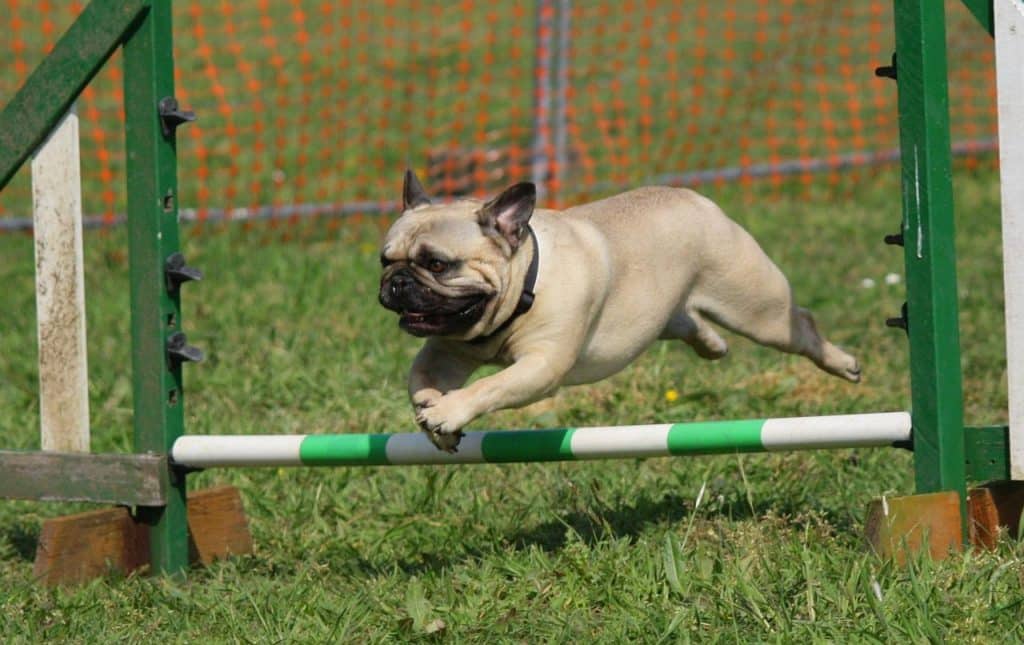
This image is property of pixabay.com.
Introduce Slowly
Introduce Scents
Before introducing your new dog to your home, it can be helpful to let them familiarize themselves with the scents of their new environment. You can do this by bringing home a blanket or toy that has the scent of the rescue organization or breeder where the dog came from. Allow them to sniff and explore these items, which will help them feel more at ease when they eventually come home.
Make a Controlled Meeting
When it's time to bring your new dog home, it's important to make the initial meeting with any existing pets controlled and positive. Introduce the animals in a neutral space, such as a park or driveway, where they can sniff and greet each other without feeling territorial. Keep the interactions short and supervise closely, gradually increasing the duration of these meetings as the animals become more comfortable with each other.
Supervise Initial Interactions
Once your new dog is in your home, it's crucial to closely supervise their interactions with any existing pets or family members. Be cautious and watch for any signs of aggression or discomfort from either party. Keep interactions short and gradually increase the time they spend together as they grow more comfortable. Always reward positive behavior with treats and praise, and never leave animals unsupervised until you are confident that they can coexist peacefully.
Allow Time for Adjustment
Adjusting to a new home and family takes time, so be patient with your new dog during this transition period. It's normal for them to feel anxious or nervous in the beginning, but with time, love, and patience, they will start to feel secure and at home. Give them plenty of opportunities to explore their new surroundings, follow their own pace, and provide them with comfort and reassurance. With time, they will become an integral part of your family.
Provide Proper Nutrition
Consult a Veterinarian
To ensure that your new dog receives the proper nutrition, it's crucial to consult with a veterinarian. Schedule an appointment for a thorough check-up to assess the dog's overall health and discuss their dietary needs. The veterinarian can provide recommendations on the type and amount of food that is suitable for your dog's age, breed, and activity level. Following the veterinarian's guidance will help ensure optimal nutrition for your new furry family member.
Choose the Right Food
Selecting the right food for your new dog is essential for their overall well-being. Consider factors such as their age, breed, size, and any specific dietary requirements or restrictions they may have. Look for high-quality dog food with a balanced blend of protein, carbohydrates, and fats. Avoid foods with excessive fillers or artificial ingredients. Reading labels and doing research can help you make an informed decision about the best food for your new dog.
Follow Feeding Schedule
Establishing a feeding schedule is important for your new dog's digestion and overall health. Dogs thrive on routine, so feed them at the same times each day. The amount of food will depend on their age, size, and activity level. Follow the guidelines provided by your veterinarian or the dog food manufacturer, and adjust the portions as needed. Make sure your dog has access to fresh water at all times, and monitor their eating habits for any changes or abnormalities.
Monitor and Adjust Diet
It's important to monitor your new dog's diet and make adjustments as needed. Keep an eye on their body condition and weight, as well as any changes in their coat or overall energy levels. If you notice any signs of digestive issues, allergies, or sensitivities, consult with your veterinarian and consider trying a different type of food. Regular monitoring and adjustments will ensure that your new dog receives the appropriate nutrition for their individual needs.
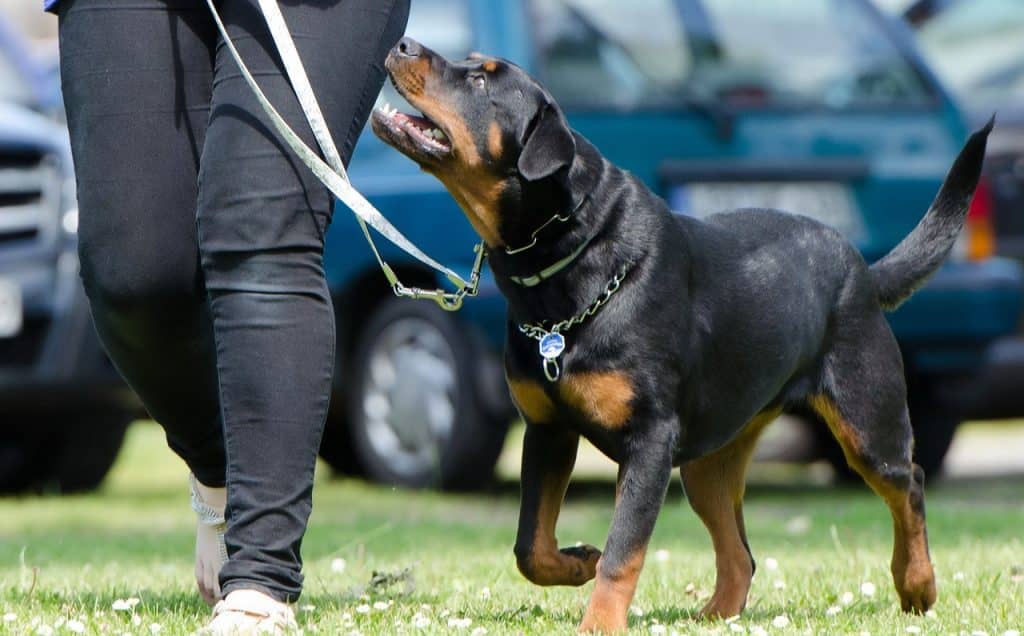
This image is property of pixabay.com.
Establish a Routine
Set Regular Feeding Times
Establishing regular feeding times will help your new dog adjust to their daily routine. Dogs are creatures of habit, so feed them at the same times each day to promote a sense of stability and security. Stick to the feeding schedule you've established and avoid free-feeding or leaving food out all day. This will not only help with housebreaking but also ensure that your dog receives the appropriate amount of food and maintains a healthy weight.
Create a Consistent Exercise Schedule
Exercise is an essential part of a dog's physical and mental well-being. Create a consistent exercise schedule to provide your new dog with the stimulation they need. Depending on their breed and energy level, aim for a minimum of 30 minutes to an hour of exercise each day. This can include walks, playtime in the backyard, or engaging in interactive games such as fetch or agility training. Consistency is key, so make exercise a priority in your daily routine.
Establish Sleep and Wake-Up Times
Dogs thrive on routine, so establishing consistent sleep and wake-up times is important. Determine how much sleep your dog needs based on their age and breed, and create a schedule that allows them to rest and recharge. Make sure they have a comfortable sleeping area and provide them with a cozy bed or crate. Stick to the sleep and wake-up times you've established to promote a sense of stability and help your dog adjust to their new environment.
Plan for Mental Stimulation
In addition to physical exercise, mental stimulation is key to keeping your new dog happy and healthy. Plan activities that challenge their minds and provide opportunities for problem-solving and learning. This can include puzzle toys, obedience training sessions, or scent games. Engage in daily training sessions that teach new tricks or reinforce basic commands. Mental stimulation will not only tire out your dog but also help prevent behavioral problems caused by boredom.
Promote Socialization
Expose to Different Environments
Socializing your new dog is crucial for their overall well-being and happiness. Expose them to different environments, such as parks, busy streets, and other public spaces. This will help them become more comfortable and confident in various situations. Gradually introduce new experiences and allow your dog to explore and interact with their surroundings. Socialization is an ongoing process, so continue to expose your dog to new environments throughout their life.
Introduce to People and Animals
Introducing your new dog to different people and animals is an important part of socialization. Start with positive experiences by introducing them to friends, family members, and neighbors who are known to be dog-friendly. Gradually expose them to different animals, both on and off-leash, in a controlled and supervised manner. Positive interactions will help your dog develop social skills and build confidence when interacting with other dogs and humans.
Enroll in Training Classes
Enrolling your new dog in training classes is a great way to promote socialization and obedience. Look for reputable training schools or trainers who use positive reinforcement techniques. These classes provide an opportunity for your dog to interact with other dogs and learn important skills in a structured environment. The guidance of a professional trainer will also help you develop a stronger bond with your dog and address any behavioral challenges that may arise.
Encourage Positive Experiences
Throughout the socialization process, it's important to encourage positive experiences for your new dog. Use treats, praise, and rewards to reinforce good behavior and create positive associations. This will help your dog build confidence and trust in different situations. Avoid forcing your dog into uncomfortable interactions and always respect their boundaries. By encouraging positive experiences, you'll help your dog feel more at ease in social settings and enjoy a well-rounded and fulfilling life.
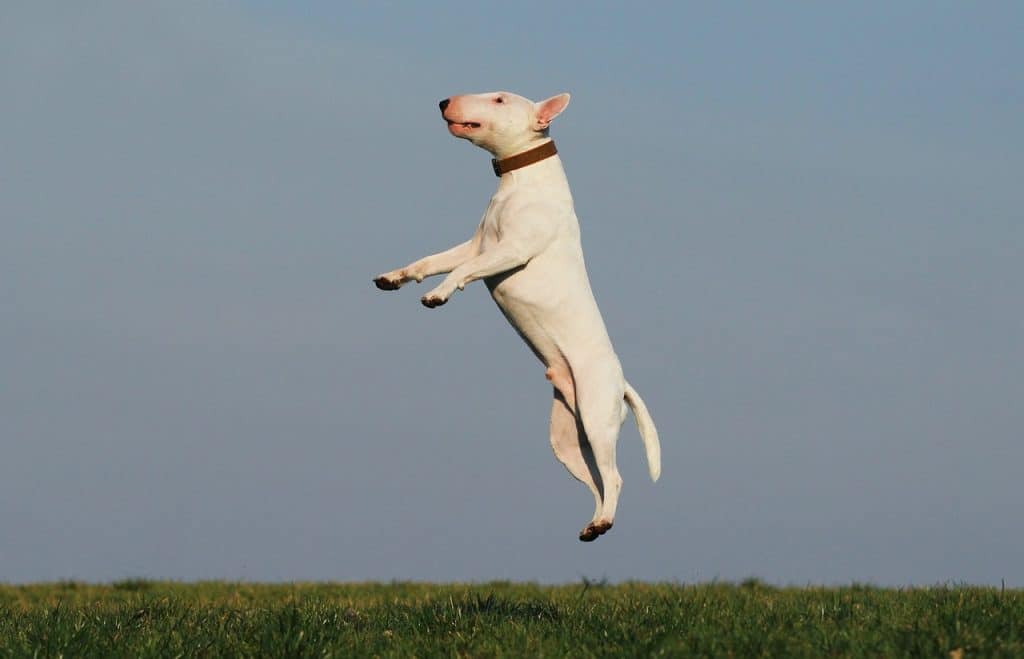
This image is property of pixabay.com.
Practice Patience
Allow Adjustment Period
Every dog has a unique adjustment period when joining a new family. Some may settle in quickly, while others may take longer to feel comfortable. It's important to be patient and allow your new dog the time they need to adjust to their new surroundings. Avoid overwhelming them with too many new experiences or expectations. Respect their pace and provide them with love, reassurance, and patience throughout the adjustment period.
Be Understanding of Behaviors
During the adjustment period, it's important to be understanding of any behaviors your new dog may exhibit. They may display nervousness, fear, or even exhibit signs of separation anxiety. Rather than scolding or punishing them, be patient and understanding. Use positive reinforcement techniques to encourage desirable behaviors and redirect any unwanted behaviors. Seek professional help if needed, such as consulting with a certified dog trainer or behaviorist, who can provide guidance specific to your dog's needs.
Use Positive Reinforcement
Positive reinforcement is a powerful training tool that helps foster a strong bond with your new dog. Whenever your dog exhibits a desired behavior, such as following a command or being calm, reward them with praise, treats, or playtime. Positive reinforcement motivates your dog to repeat these behaviors and strengthens the bond between you. Avoid punishment-based training methods, as they can damage the trust and relationship with your new dog.
Seek Professional Help if Needed
If you're facing challenges integrating your new dog into your family, don't hesitate to seek professional help. A certified dog trainer or behaviorist can provide guidance tailored to your dog's specific needs. They can help address any behavioral issues and provide you with the tools and strategies necessary for a successful integration. Remember, seeking professional help is a sign of responsible ownership and is always a valuable investment in your dog's well-being.
Ensure Health and Safety
Schedule Veterinary Check-ups
Regular veterinary check-ups are essential for your new dog's health and well-being. Schedule an appointment soon after bringing your dog home to assess their overall health and address any immediate concerns. Follow the recommended vaccination and deworming schedules, and discuss any specific health needs or concerns with your veterinarian. Regular check-ups will allow early detection and prevention of potential health issues, ensuring a healthy and happy life for your dog.
Vaccinate and Microchip Your Dog
Protecting your new dog from preventable diseases is crucial. Make sure they are up to date on all necessary vaccinations, including rabies, distemper, and parvo. Talk to your veterinarian about a vaccination schedule and any specific requirements based on your dog's age and lifestyle. Microchipping your dog is also an important safety measure. In case they ever become lost, a microchip provides a way to identify and reunite them with you.
Maintain Good Hygiene
Maintaining good hygiene is essential for your dog's health and well-being. Regularly groom your dog by brushing their coat, trimming their nails, and cleaning their ears. Bathe them as needed using dog-specific shampoos, and make sure to towel dry them thoroughly. Dental hygiene is also important, so introduce teeth brushing to your dog's routine using dog-friendly toothpaste. Good hygiene practices will keep your new dog looking and feeling their best.
Secure Proper Identification
Ensuring that your new dog is properly identified is crucial in case they ever become lost. Make sure they wear a secure collar with an identification tag that includes your contact information. Consider getting your dog registered or licensed with your local animal control or county. As an additional measure, microchip your dog, as mentioned earlier. These identification methods greatly increase the chances of being reunited with your dog should they go missing.
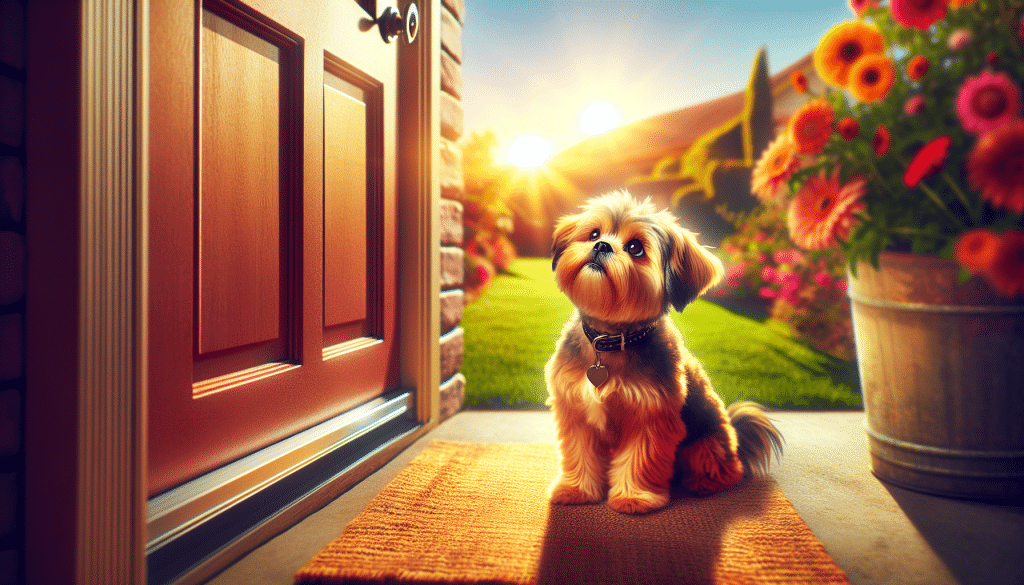
Encourage Bonding
Spend Quality Time Together
One of the most important aspects of integrating a new dog into your family is building a strong bond. Spend quality time together by engaging in activities that you both enjoy. This can include going for walks, playing games, or simply cuddling and relaxing together. Regularly set aside dedicated time to focus solely on your new dog, providing them with love, attention, and companionship. The more time you invest in bonding, the stronger your relationship will become.
Engage in Play and Training
Play and training sessions are not only enjoyable for your new dog but also serve as bonding opportunities. Play games like fetch or hide-and-seek, and engage in interactive toys that promote mental stimulation and physical exercise. Regular training sessions not only teach your dog new skills but also strengthen the bond between you. Use positive reinforcement techniques to make these sessions fun and rewarding for both you and your new furry friend.
Use Toys and Treats for Positive Association
Toys and treats can be powerful tools for building a positive association with you and your home. Introduce a variety of toys that are safe and engaging for your dog, such as puzzle toys or interactive treat-dispensing toys. Use treats as rewards during training sessions and when your dog exhibits desired behaviors. By using toys and treats in a positive and consistent manner, you'll create a strong bond and a positive association with you as their caregiver.
Include the Dog in Family Activities
To further encourage bonding, include your new dog in family activities whenever possible. Whether it's going for a hike or a family picnic, find ways to involve your dog in the fun. This will not only help integrate them into your family unit but also strengthen their sense of belonging. Just make sure to consider their comfort and safety and provide them with the necessary resources, such as water and shade, when participating in activities together.
Be Mindful of Children and Pets
Teach Children Dog Etiquette
If you have children, it's important to teach them about proper dog etiquette to ensure a safe and positive environment for everyone. Teach them how to approach and interact with dogs, emphasizing the importance of gentle behavior and respecting the dog's space. Explain that dogs have their own boundaries and shouldn't be bothered when they are eating, sleeping, or showing signs of discomfort. Educating children about responsible dog ownership promotes a harmonious relationship between them and your new dog.
Supervise Interactions
Whenever children and dogs are together, it's crucial to closely supervise their interactions. Never leave young children unsupervised with a new dog, as accidents can happen. Watch for any signs of discomfort or stress from either the dog or the child, and intervene if necessary. Encourage gentle and positive interactions, and make sure that all family members understand the importance of respecting the dog's boundaries and personal space.
Train Both Children and Dog
In addition to teaching children about dog etiquette, it's also important to train your new dog to be comfortable around children. Gradually introduce them to children of different ages and energy levels, using positive reinforcement techniques. Teach your dog to associate children with positive experiences, such as treats and praise. Similarly, continue to educate your children about responsible behavior around dogs and reinforce consistent boundaries for both parties.
Gradually Introduce Other Pets
If you have other pets at home, introducing them to your new dog should be done gradually and under controlled circumstances. Start with scent exchanges by providing each animal with a blanket or toy that carries the scent of the other. This will help them become familiar with each other's scent. Slowly introduce the animals in a neutral space, and closely supervise their interactions. Gradually increase the duration and frequency of these interactions as everyone becomes more comfortable.
Integrating a new dog into your family can be an exciting and rewarding experience. By following these tips and tricks, you'll create a smooth transition for both your new furry friend and your existing family members. Remember to be patient, consistent, and understanding throughout the process, as building a strong bond takes time. With love, patience, and proper care, your new dog will become a cherished member of your family for years to come.
